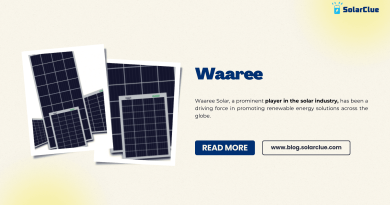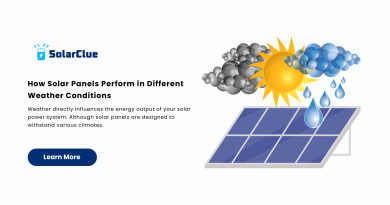how do solar panels generate electricity
Solar panels are an incredible technology that allows us to convert sunlight into usable electricity, offering a clean and renewable energy source. This guide will delve into the science behind solar energy, the process of electricity generation through the photovoltaic effect, and the structure of a solar panel. We’ll also discuss how the generated electricity is converted for use in homes and businesses, factors affecting solar panel efficiency, and tips on maximizing power output.
Table of Contents
- 1 The Science Behind Solar Energy
- 2 Different Types of Solar Cells
- 3 Solar Panel Efficiency and Performance
- 4 The Structure of a Solar Panel
- 5 The Role of Inverters in Solar Power Systems
- 6 Comparing Solar Panels to Traditional Power Sources
- 7 The Future of Solar Panel Technology
- 8 Common Misconceptions About Solar Power
- 9 Table: Comparison of Solar Cell Types
- 10 FAQ Section
- 11 Conclusion
The Science Behind Solar Energy
The Photovoltaic Effect:
- Definition: The photovoltaic (PV) effect is the process by which solar panels convert sunlight directly into electricity. This effect occurs at the atomic level, where photons (light particles) interact with electrons in a semiconductor material.
- How It Works:
- Photons and Electrons: When sunlight strikes the solar panel, photons from the light knock electrons loose from atoms in the semiconductor material.
- Electron Flow: These freed electrons generate an electric current as they move through the material, which is then harnessed as electricity.
Different Types of Solar Cells
Monocrystalline Solar Cells:
- Description: Made from a single crystal of silicon, these cells are known for their high efficiency and long lifespan.
- Efficiency: Typically 15-22%, making them one of the most efficient types of solar cells.
- Appearance: Usually black, with rounded edges.
Polycrystalline Solar Cells:
- Description: Made from multiple silicon crystals melted together, these cells are less expensive but slightly less efficient than monocrystalline cells.
- Efficiency: Typically 13-17%.
- Appearance: Usually blue, with a square shape.
Thin-Film Solar Cells:
- Description: Made by depositing thin layers of photovoltaic material onto a substrate, these cells are flexible and lightweight but generally less efficient.
- Efficiency: Typically 10-12%.
- Application: Often used in large-scale installations or where flexibility is needed.
Solar Panel Efficiency and Performance
Factors Affecting Efficiency:
- Temperature: Solar panels are less efficient at higher temperatures. Excessive heat can reduce the energy output.
- Angle and Orientation: Panels should be positioned at the optimal angle to maximize exposure to sunlight throughout the day.
- Shading: Shadows from trees, buildings, or other obstructions can significantly reduce a panel’s efficiency.
- Quality of Materials: Higher-quality materials and manufacturing processes lead to more efficient solar panels.
Measuring Efficiency:
- Efficiency Percentage: Solar panel efficiency is measured as the percentage of sunlight that the panels can convert into usable electricity.
- Standard Test Conditions (STC): Efficiency ratings are based on tests conducted under standard conditions, which include a specific light intensity and temperature.
The Structure of a Solar Panel
Solar Cells:
- Core Component: The individual solar cells are the heart of the solar panel, where the photovoltaic effect takes place.
- Connection: Multiple cells are connected in series and parallel to form a solar module, increasing the voltage and current output.
Encapsulation:
- Protection: Solar cells are encapsulated in protective layers, usually made of ethylene vinyl acetate (EVA), to shield them from moisture, dust, and mechanical damage.
Glass and Frame:
- Glass Cover: The top layer of the panel is typically a sheet of tempered glass that protects the solar cells while allowing sunlight to pass through.
- Aluminum Frame: Provides structural support and helps with mounting the panel on rooftops or ground-based systems.
Junction Box:
- Electrical Connections: The junction box houses the electrical connections and diodes that protect the panel from reverse current.
The Role of Inverters in Solar Power Systems
DC to AC Conversion:
- Direct Current (DC): Solar panels generate electricity in the form of direct current (DC), where the electric charge flows in one direction.
- Alternating Current (AC): Most household appliances and the electrical grid use alternating current (AC), where the charge periodically reverses direction.
- Inverter Function: The inverter is a critical component in a solar power system, converting the DC electricity generated by the panels into AC electricity that can be used in homes or sent back to the grid.
Types of Inverters:
- String Inverters: Connect multiple panels in series, converting the combined DC output into AC. Commonly used in residential and small commercial systems.
- Microinverters: Installed on each individual panel, converting DC to AC at the panel level. This allows for better performance in systems with shading or varied panel orientations.
- Hybrid Inverters: Capable of working with battery storage systems, allowing excess energy to be stored and used when needed.
Comparing Solar Panels to Traditional Power Sources
Renewable vs. Non-Renewable:
- Solar Energy: A renewable energy source that relies on sunlight, which is abundant and inexhaustible.
- Fossil Fuels: Non-renewable energy sources like coal, oil, and natural gas, which are finite and contribute to environmental pollution.
Environmental Impact:
- Solar Panels: Produce no direct emissions during operation, making them an environmentally friendly option.
- Traditional Power Sources: Fossil fuel-based power generation releases greenhouse gases and pollutants, contributing to climate change and health issues.
Cost Comparison:
- Initial Investment: Solar panels require a higher upfront cost, but government subsidies and incentives can reduce this significantly.
- Long-Term Savings: Solar energy can lead to significant savings on electricity bills over time, especially as energy prices from traditional sources continue to rise.
The Future of Solar Panel Technology
Emerging Technologies:
- Perovskite Solar Cells: A promising new technology that could offer higher efficiency and lower production costs than current silicon-based solar cells.
- Bifacial Solar Panels: These panels can capture sunlight from both sides, increasing their energy output.
Integration with Smart Grids:
- Smart Inverters: Future inverters may include more advanced features, such as real-time monitoring and grid interaction capabilities.
- Energy Storage: Advances in battery technology will allow more efficient storage of solar energy, improving the reliability and flexibility of solar power systems.
Common Misconceptions About Solar Power
Myth: Solar Panels Don’t Work on Cloudy Days:
- Reality: While solar panels are less efficient on cloudy days, they still generate electricity from diffused sunlight.
Myth: Solar Panels Are Too Expensive:
- Reality: The cost of solar panels has decreased significantly over the years, and with government subsidies, the initial investment is more affordable.
Myth: Solar Panels Require a Lot of Maintenance:
- Reality: Solar panels require minimal maintenance, primarily cleaning and periodic inspections to ensure optimal performance.
Table: Comparison of Solar Cell Types
| Solar Cell Type | Efficiency | Cost | Appearance | Best For |
|---|---|---|---|---|
| Monocrystalline | 15-22% | Higher | Black, rounded edges | High-efficiency systems, limited roof space |
| Polycrystalline | 13-17% | Moderate | Blue, square shape | Cost-effective solutions, larger installations |
| Thin-Film | 10-12% | Lower | Flexible, lightweight | Large-scale installations, varied surfaces |
FAQ Section
- How do solar panels generate electricity?
- Solar panels generate electricity through the photovoltaic effect, where sunlight knocks electrons loose from atoms in a semiconductor material, creating an electric current.
- What is the role of an inverter in a solar power system?
- An inverter converts the direct current (DC) generated by solar panels into alternating current (AC), which is used by most household appliances and the electrical grid.
- What factors affect solar panel efficiency?
- Factors such as temperature, shading, angle and orientation, and the quality of materials all impact the efficiency of solar panels.
- Can solar panels generate electricity on cloudy days?
- Yes, solar panels can still generate electricity on cloudy days, although their efficiency is reduced due to lower light intensity.
- What types of solar cells are available, and how do they differ?
- The main types of solar cells are monocrystalline, polycrystalline, and thin-film. They differ in efficiency, cost, appearance, and best-use scenarios.
Conclusion
Solar panels are a powerful technology that harnesses the sun’s energy to generate electricity, offering a clean and sustainable alternative to traditional power sources. By understanding the science behind solar energy, the structure of solar panels, and the factors affecting their efficiency, you can make informed decisions about incorporating solar power into your energy strategy. As technology continues to advance, solar panels will become even more efficient and accessible, playing a crucial role in the global shift towards renewable energy.



